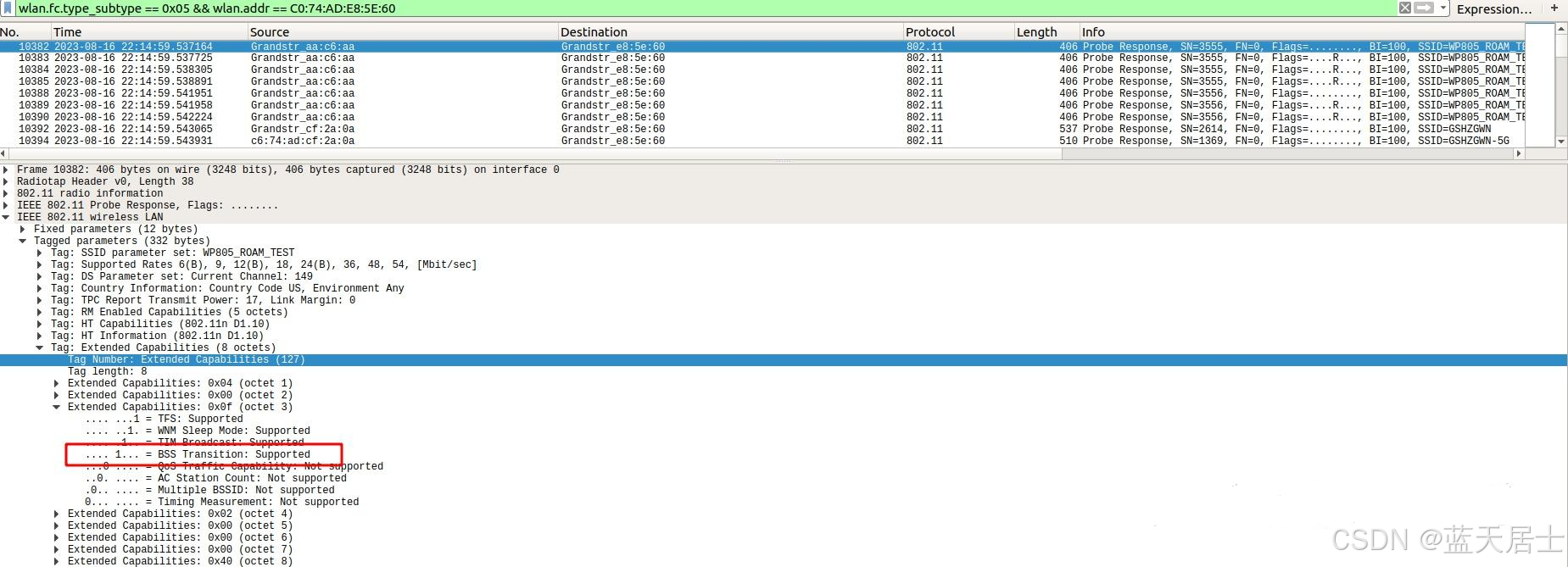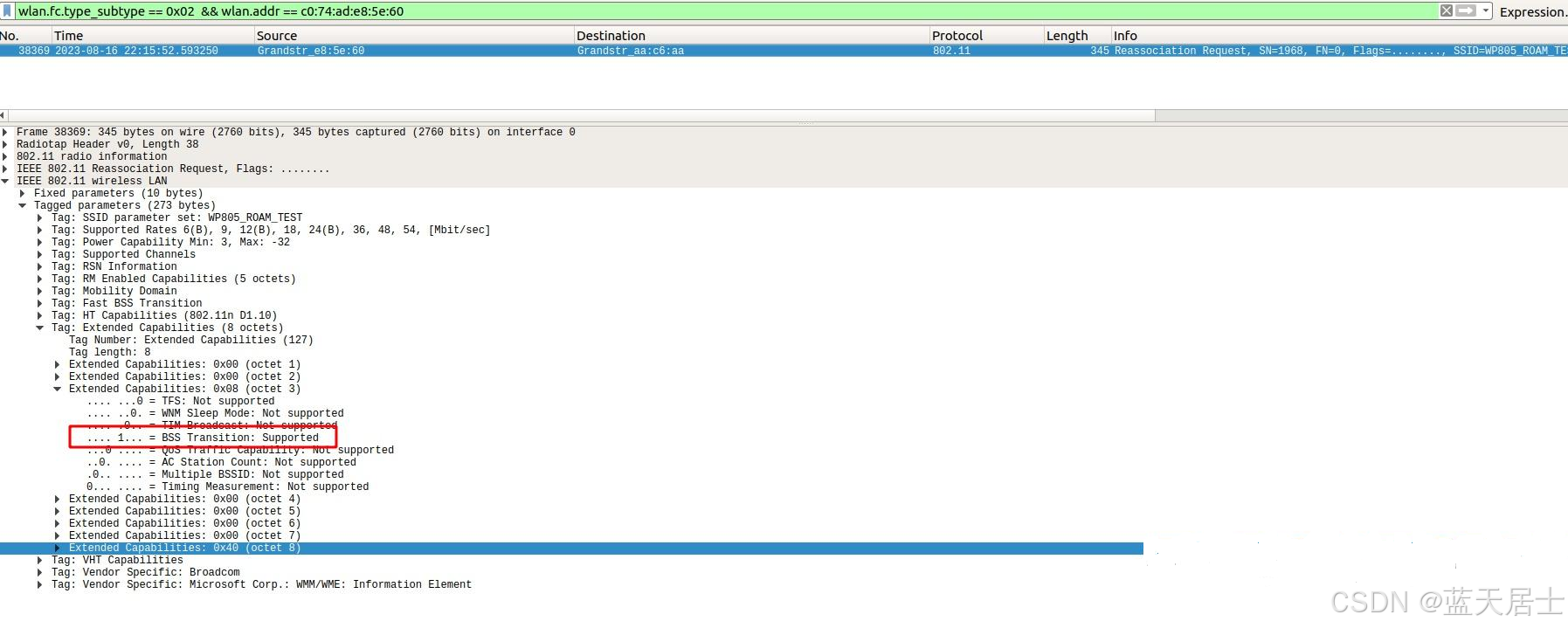
2. 802.11v
协议全称:无线网络管理协议(Wireless Network Management,WNM)。
协议别名:BSS过渡管理。
(1)802.11v协议介绍
1)网络辅助功能
帮助终端设备更长时间睡眠。比如,手机等设备通过每隔一段时间跟AP一次来确保跟AP没有断开。
2)网络辅助漫游
允许WLAN发送信息给终端,来确保终端能连接更好的AP。这可以带来两点好处:
- 负载均衡
- 让信号不好的终端更换AP
(2)802.11v协议验证
802.11v是一个庞大的修正案,包含了众多服务特性,共计21种:
— BSS Max idle period management
— BSS transition management
— Channel usage
— Collocated interference reporting
— Diagnostic reporting
— Directed multicast service (DMS)
— Event reporting
— Flexible multicast service (FMS)
— Location services
— Multicast diagnostic reporting
— Multiple BSSID capability
— Proxy ARP
— QoS traffic capability
— SSID list
— Triggered STA statistics
— TIM broadcast
— Timing measurement
— Traffic filtering service
— U-APSD Coexistence
— WNM-Notification
— WNM-Sleep mode
在此仅介绍经常使用到的一种特性验证,就是BSS transition management验证方法。
1)首先要看AP支持不支持。AP发出的Probe Response帧(wlan.fc.type_subtype == 0x05)中的Extended Capabilities字段下可以看到BSS Transition support值是否被置为1。如下图所示:

2)其次要看无线终端支不支持。看设备发出的Reassociation Request帧(wlan.fc.type_subtype == 0x02)或者看association Request帧(wlan.fc.type_subtype == 0x00)中的Extended Capabilities字段下可以看到BSS Transition support值是否被置为1。如下图所示:

3)无线终端从远端一个AP到另一个近端AP移动时,AP会主动发送btm request (wlan.fc.type_subtype == 0x0d)或者(wlan.fixed.category_code == 10)。如下图所示:

4)无线终端收到AP发来的btm request会回复btm response,resonse信息里有根据信号强度推荐可以连接的AP。如上图所示。
更多内容请看下回。





















 5357
5357

 被折叠的 条评论
为什么被折叠?
被折叠的 条评论
为什么被折叠?








